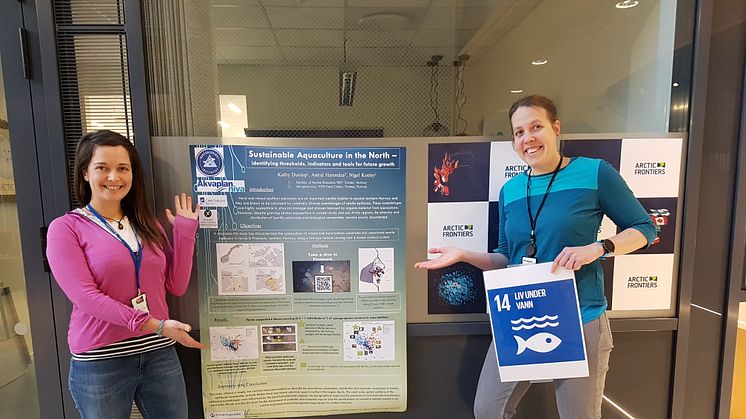
Nyhet -
Poster award to SUSTAIN-AQUA
During the 2020 version of the annual conference Arctic Frontiers the project SUSTAIN-AQUA won the 1. prize in the Arctic Frontiers SCIENCE poster award. The authors were Kathy Dunlop (IMR), Astrid Harendza (Akvaplan-niva) and Nigel Brian Keeley (IMR).
The title of the poster was: "Sustainable Aquaculture in the North - Identifying thresholds, indicators and tools for future growth."
About SUSTAIN-AQUA:
Norway's large and important salmon farm industry is expected to grow substantially in the near future. Much of this expansion will occur in the north due to space availability and increasing sea temperatures. It is critical for both the national economy and the global reputation of the industry that this growth is planned and managed effectively and is sustainable - long-term. The benthic environments in these Northern regions are thought to be predominantly comprised of hard and mixed bottom habitats that are relatively unique. Unlike for soft-sediment habitats, many of the hard-bottom inhabitants are poorly understood in terms of their tolerance of farm derived-wastes, and critically, there is presently no defensible approach for monitoring the effects. This situation is compounded by a paucity of basic information on their composition and spatial distributions. Thus, there is a clear and pressing need to increase our knowledge about potential interactions between farm-derived wastes and the mixed and hard-bottom habitats of Northern Norway. This project plans to address this problem by studying the environmental tolerances of the prevalent fauna, identifying alternative indicators of ecosystem effects, and in doing so, developing novel approaches to environmental monitoring. Two potential alternate approaches will be examined; one based on visual indicators of enrichment, and the other utilising state-of-the-art next-generation sequencing techniques to describe the associated microbial communities. In addition, this projects aims to increase our ability to predict effects and to position farms such that overlapping farm effects can be avoided and any ecological sensitive or valuable habitats can be protected. This will be achieved by updating, validating and improving two leading depositional models, such that they are able to reliably predict the spatial distribution of organic wastes from the farms as well as the associated potential effects boundaries.